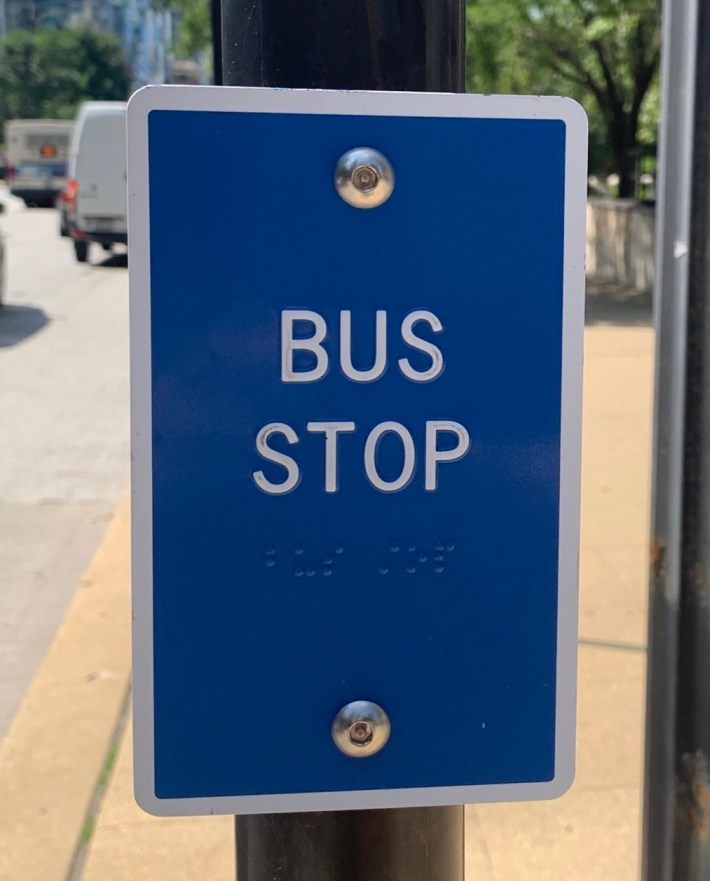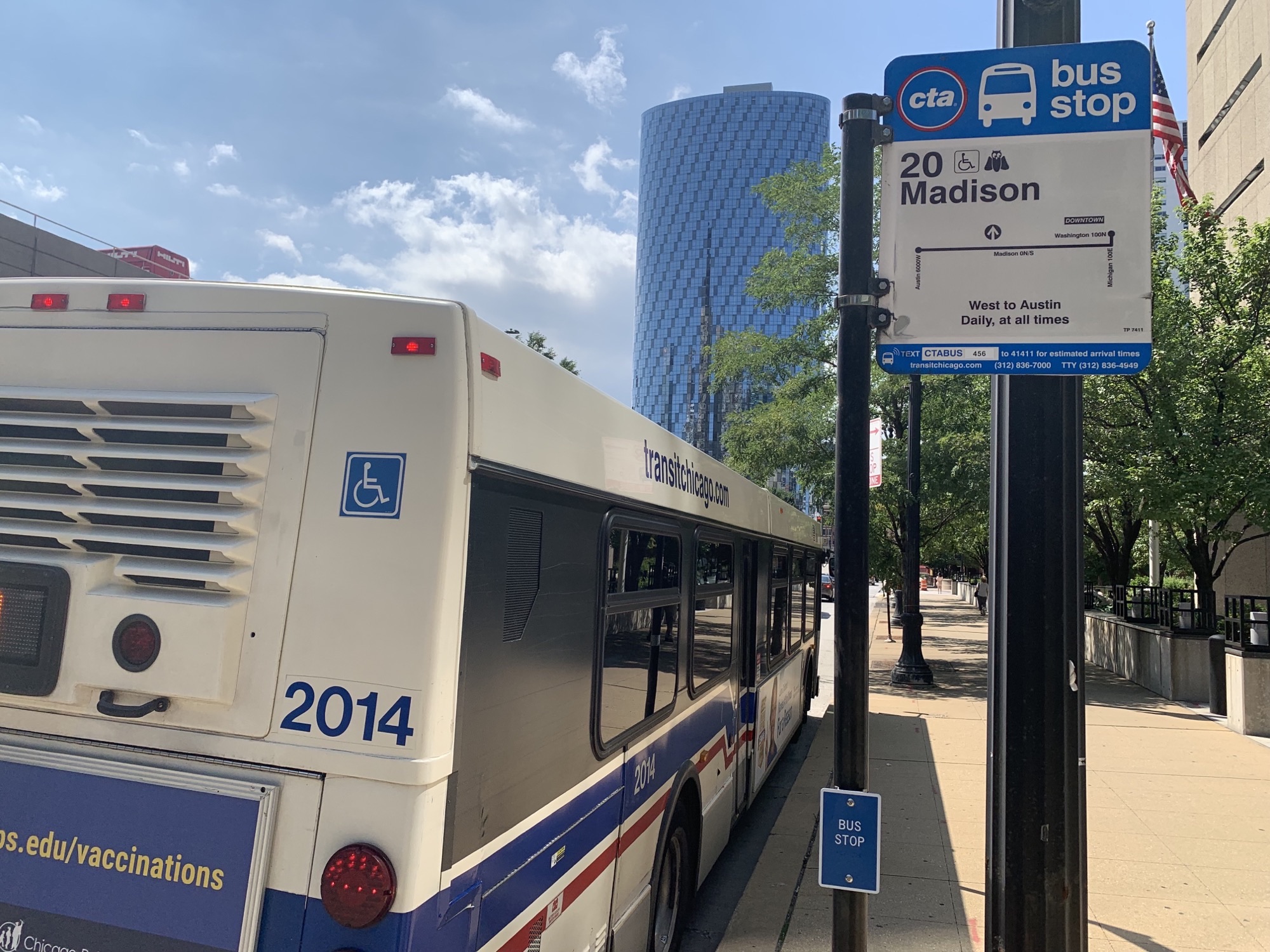In March of this year I wrote about a lawsuit to force the city of Chicago to retrofit its intersections with audible pedestrian signals, devices that constantly emit a “tock” sound to alert people with visual impairments of their locations. When a person pushes a button on the gadget, they’re provided with a recorded message or other auditory and tactile cues that tell them whether or not they have a walk signal. Chicago is way behind peer cities in this department.
There was some good news on Tuesday about efforts to make Chicago streets more accessible to people with visual impairments. The CTA announced that it's begun installing over 1,300 tactile bus stop signs, with Braille and raised letters, on 12 routes. The agency says that it got the idea for the program from feedback from blind and low-vision customers.
The pilot is partially bankrolled by the a Federal Transit Administration Section 5310 Enhanced Mobility of Seniors and Individuals with Disabilities grant, which included $380,350 for the project.
“As part of our ongoing dialogue with members of the disability community, we learned that many who were blind or low vision would often avoid taking the bus, opting for paratransit or rail service out of frustration from being unable to confidently locate a bus stop,” said CTA President Dorval R. Carter, Jr. in a statement. “Our goal with this pilot is to create and test a practical solution to help remove a barrier that so many riders encounter and ensure everyone has convenient access to affordable and reliable public transit services.
The 4" by 6.5" signs are bolted onto existing bus stop sign posts, between four and five feet from the ground. The Braille and raised type simply says "BUS STOP."

“This solution was created by many stakeholders, including disability community input from riders with disabilities including those who are blind and low vision,” said Mayor’s Office for People with Disabilities Commissioner Rachel Arfa in a statement. “We applaud CTA for providing tactile signage for blind and low vision users of our transportation systems.”
Already each stop on #20 Madison route has the new signs. The placards will be added to these 11 routes within the next year:
- #4 Cottage Grove
- #X4 Cottage Grove Express
- #9 Ashland
- #X9 Ashland Express
- #12 Roosevelt
- #49 Western
- #X49 Western Express
- #63 63rd
- #66 Chicago
- #79 79th
- #157 Streeterville/Taylor
To prepare for the pilot, the CTA looked at best practices from other cities, and then used this info to create a draft design for the signs. this was presented to a focus group of people with disabilities, who provided feedback on the color, material, legibility, size, and other variables, which was used the finalize the design.
While I'm no expert on accommodations for people with visual impairments, I'm curious why the signs include so little info, other than simply stating that the object you are touching is a bus stop sign. I realize that the format provides limited room for text, but wouldn't it have been more useful to at least provide info on the route number, and possibly the direction of travel?
And then there's the expense. It appears that each of these small signs is costing $292.58, including research and design, the focus group expenses, and installation, which seems a bit extreme.
If I get info about these topics from the transit agency, I'll update this post.
For more information the CTA's accessibility efforts, including the All Station Accessibility plan, visit. https://www.transitchicago.com/accessibility/asap/.




